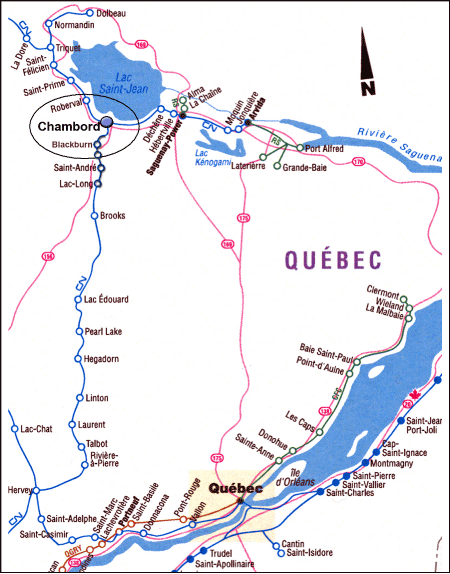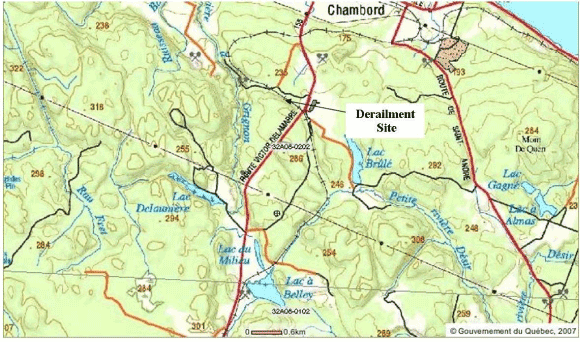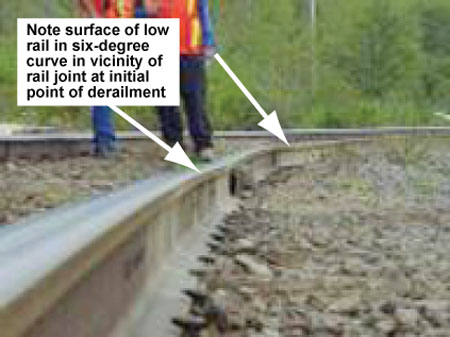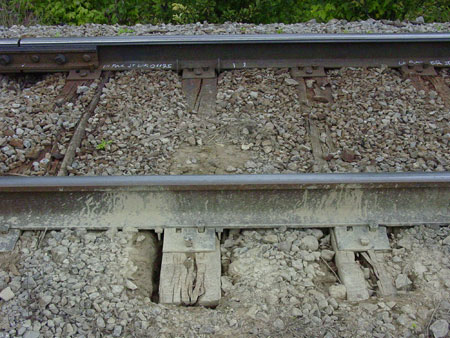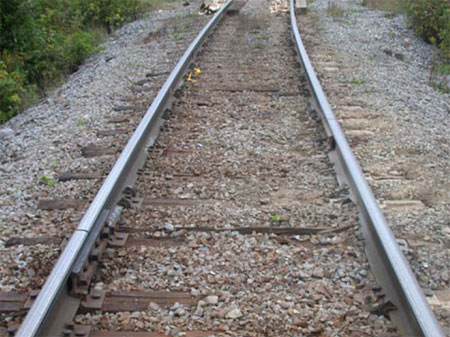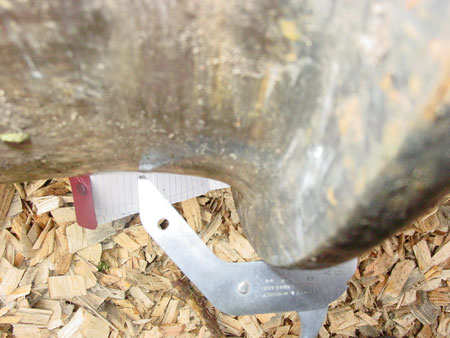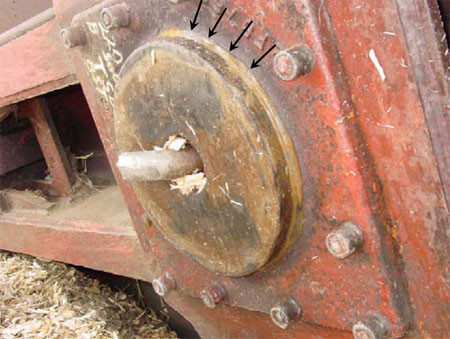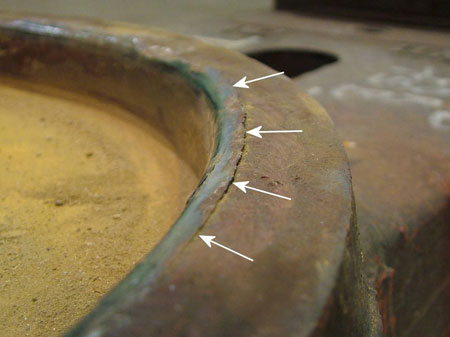Main-track train derailment
Canadian National
Freight train M-36231-25
Mile 153.2, Lac-Saint-Jean Subdivision
Chambord, Quebec
The Transportation Safety Board of Canada (TSB) investigated this occurrence for the purpose of advancing transportation safety. It is not the function of the Board to assign fault or determine civil or criminal liability. This report is not created for use in the context of legal, disciplinary or other proceedings. See Ownership and use of content. Masculine pronouns and position titles may be used to signify all genders to comply with the Canadian Transportation Accident Investigation and Safety Board Act (S.C. 1989, c. 3).
Summary
On 27 August 2006, at 1345 eastern daylight time, Canadian National freight train M-36231-25 derailed 12 cars at Mile 153.2 of the Lac-Saint-Jean Subdivision, near Chambord, Quebec. One of the derailed cars contained flammable liquids, Class 3, UN 1202. There were no injuries and no dangerous goods were released.
Ce rapport est également disponible en français.
Factual information
The accident
On 27 August 2006, Canadian National (CN) freight train M-36231-25 (the train) departed Garneau, Quebec, and proceeded northward on the Lac-Saint-Jean Subdivision destined for Chambord, Quebec. The crew consisted of a locomotive engineer and a conductor. Both were qualified for their respective positions, and met established fitness and rest standards. The train consisted of 2 locomotives and 93 cars (20 loads, 73 empties), weighed approximately 4980 tons and was about 6140 feet long.
At 1345 eastern daylight time,Footnote 1 as the train was approaching Chambord, a train-initiated emergency brake application occurred at Mile 153.2 of the Lac-Saint-Jean Subdivision (see Figure 1). At the time, the train was travelling at 25 mph with the throttle in the idle position and the brake pipe pressure fully charged (87 pounds per square inch [psi]). The lead locomotive came to rest at Mile 153.4. The train crew followed emergency procedures, inspected the train, and found that five loaded cars and seven empty cars (the 6th to 17th cars from the head end) had derailed. The derailed equipment consisted of four gondola cars loaded with wood chips, one tank car loaded with a flammable liquid (Class 3, UN 1202), four empty box cars, and three empty gondola cars. Approximately 1400 feet of track was damaged. There were no injuries.
At the time of the accident, the temperature was approximately 16°C with cloudy skies. Light rain showers (7 to 9 mm) had been recorded in the area during the day.
Track information
The Lac-Saint-Jean Subdivision consists of a single main track that extends northward from Garneau Yard (Mile 0.0) to Arvida, Quebec (Mile 203.5). Train movements are governed by the Occupancy Control System as authorized by the Canadian Rail Operating Rules and are supervised by a rail traffic controller located in Montréal, Quebec. The track is Class 3 according to Transport Canada (TC)-approved Railway Track Safety Rules (TSR). Between Mile 95.3 and Mile 165.6, zone speed is 40 mph for both passenger and freight trains; however, for curves between Mile 139.9 and Mile 156.5, speeds are restricted to 35 mph for passenger trains and 25 mph for freight trains. Rail traffic consists of 24 freight trains and 6 passenger trains per week with an annual tonnage of about 8 million tons.
In the area of the derailment, the track consists of 136-pound rail (RE Sydney Steel) manufactured in 1991 sitting on 14-inch double-shouldered tie plates. On curves, it is secured to the ties with five spikes and box-anchored every second tie. On tangents, the rail is fastened to the ties with two spikes and box-anchored every third tie. There are approximately 3200 ties per mile. The ballast consists primarily of crushed rock ranging from 1 to 2 ¼ inches in diameter.
The track has a reverse curve configuration with a descending gradient to the north (direction of train movement) that varies from 0.0 to 1.0 per cent. The reverse curve consists of a two-degree, left-hand curve followed by a six-degree, right-hand curve. There is a public highway crossing in the left-hand curve and there are four private or farm crossings within one-quarter mile of the derailment in the right-hand curve (see Figure 2).
There were two rail joints, one located in each rail of the right-hand curve, staggered 10 feet apart. There was indication of vertical movement of the track structure under 12 ties on the field side of the low rail due to tie pumping. The web and base of the rail were muddy at this location as a result of the pumping. Additionally, there were small voids at the ends of the ties on the high rail indicating that the curve was moving slightly to the inside. The first marks on the head of the high rail were noted at Mile 153.2, approximately 11 feet north of a low spot on the low rail where the ties were pumping (see photos 1 to 3). The marks went to the field side of the high rail within 65 feet.
Unloaded track gauge and cross-level measurements were taken in the body and exit spiral of the six-degree, right-hand curve. The following observations were made:
- The superelevation in the body of the curve varied between 4 ½ inches and 5 7/8 inches. CN's Standard Practice Circular (SPC) Recommended Method (RM) 1305-0 stated that the maximum superelevation allowed on a curve was the lesser of the balanced superelevation or 5 inches, unless authorized by the chief engineer. The balanced superelevation for 35 mph on a six-degree curve is 5 1/8 inches. Irrespective of speed, the maximum allowed by the TSR is 6 inches.
- There were two adjacent spots in the low rail where the difference in cross-level was 5 5/8 and 5 7/8 inches. In addition, there was ¾ inch of vertical movement under the ties due to the previously described pumping conditions.
In the area of the derailment, track inspections were performed regularly in accordance with the TSR. The latest track inspection was performed by hi-rail on 27 August 2006; no exceptions were noted. A track geometry inspection was performed by a track evaluation car on 08 June 2006; two urgent defects (for 3 feet of wide gauge and 18 feet of cross-level), and five priority defects (gauge, cross-level, warp, and superelevation) were identified between Mile 153.1 and Mile 153.3, including 14 feet of excessive superelevation (5 7/8 inches) at Mile 153.2.
Car information
The first three derailed cars had similarities in their design and their loading. Each was a high-sided gondola car, loaded with wood chips. The cars were 65 feet long with 48-foot truck centres, built in 1982. Physical characteristics included a height of 14 feet and 9 inches, a carrying capacity of 6700 cubic feet, a tare weight of approximately 56 300 pounds, and a total allowable weight of 220 000 pounds. The cars received a safety inspection on August 24 and a No. 1 air brake test on 27 August 2006 in Garneau. No defects were found.
One derailed wheel set was noted to have a flange height of more than 1 ½ inches, exceeding the TC-approved Railway Freight Car Inspection and Safety Rules limit (a high-flange condition, see Photo 4).
The centre plates on the second and third derailed wood chip cars were examined. Both the truck and body centre plates were noted to have wear beyond the vertical surfaces at the outer radii of the centre plates (see Photo 5 and Photo 6). The centre plate conditions would not have been easily identified during safety inspections of railway cars in a train due to their somewhat concealed location under the car body.
The truck bolster and centre plates from the B-end of the third derailed car (CN 878220) were submitted to the TSB Engineering Laboratory for further examination and analysis (TSB report LP 092/2006). Calculations were also conducted on the truck rotational resistance moment and wheel unloading due to centre plate rim contact. The following observations were made:
- The wear areas on the centre plates were relatively equal and symmetric, suggesting that the wear was caused during rock-and-roll motion, which is not unusual for high-sided cars.
- The rim of the truck centre plate had been in long-term contact with the base of the body centre plate, which is a condition not allowed by the Association of American Railroad (AAR) rules.
- Even light rim contact off-centre can produce extra wheel unloading and increase rotational resistance moment of the truck.
Uneven loading of wood chips was observed in the cars as the wood chips were blown into the open top cars during loading. The weights of the first four derailed wood chip cars obtained at the last wayside inspection point at Saint-Tite, Quebec, showed an asymmetrical load distribution (see Table 1). The heaviest wheel weights were located on the east rail, that is, they would have been loading the low rail of the six-degree curve.
| Car number | East rail | West rail | Position in consist | Sequence of derailed cars | Leading | Location of heaviest wheel |
|---|---|---|---|---|---|---|
| CN 878080 | 92.69 | 84.15 | 6th | 1st | B | L-1, 40.4 |
| CN 878232 | 98.52 | 81.15 | 7th | 2nd | B | L-1, 50.4 |
| CN 878220 | 92.18 | 89.3 | 8th | 3rd | A | R-3, 35.1 |
| CN 879372 | 101.12 | 84.21 | 9th | 4th | A | R-1, 57.9 |
Further calculations were performed to determine the possible effect that the existing imbalance had on a given car's performance throughout various levels of superelevation conditions, that is, 1 5/8, 2 5/8, 5 5/8 and 6 5/8 inches. Using the actual weights from Saint-Tite, these calculations showed that the ratio of imbalance would have been in the range of 2 to 10 per cent on tangent track. However, this could potentially increase to 24 to 32 per cent when operating over the track conditions in the curve.
Association of American Railroads – Maximum level of imbalance
In 2006, the Transportation Technology Center, Inc. (TTCI), located in Pueblo, Colorado, United States, launched a Strategic Research Initiative to determine an acceptable level of imbalance for cars operating in interchange service. Part of this initiative used NUCARS® modelling as a means to determine the limits of extreme imbalanceFootnote 2 or AAR condemnable notification limits. Models representing a matrix of imbalance were generated for three different car types (transverse coil, mill gondola, and open top hopper). The results obtained were typical of any car with similar parameters (truck centre spacing, centre of gravity, body mass, and suspension). The models were run through a series of track geometry conditions representing AAR Chapter XI perturbations,Footnote 3 special track work, bridge approaches, and varying curvature. The preliminary findings of this initiative were as follows:
- Side-to-side imbalance of 21 per cent for twist and roll modes of excitation will result in wheel lift.
- End-to-end imbalance of 16 per cent will cause wheel lift at 60 mph in pitch and bounce excitation.
- Overload of 14 per cent results in dynamic wheel load factors exceeding 150 per cent of normal dynamic load, as compared to the same vehicle when balanced.
TTCI stated that imbalanced loads are an industry-wide concern with economic implications. As of March 2007, it stated that the imbalanced load project ultimately will determine a maximum tolerable imbalance, and a guideline will be proposed based on its findings. Subsequent steps in the AAR-sponsored Strategic Research Initiative include developing the Actionable Threshold criteria. These limits will be based on economic models that represent the costs borne because of imbalanced loads. The economic considerations will include the effect imbalanced loads have on bridges, track, fuel, and mechanical components.
Analysis
The train was operated in compliance with railway and regulatory requirements. There were no operating conditions that were considered causal in this occurrence. The track damage led back to Mile 153.2, where marks caused by the wheel flange were observed on the head of the high rail of the six-degree, right-hand curve. The lack of markings on the gauge face of the rail indicates that the derailment was initiated by wheel lift on the high rail, which occurred as the train was descending the grade and the cars were negotiating the right-hand curve. The analysis will focus on the conditions that contributed to the wheel lift (that is, the track conditions in the area of the derailment, and the mechanical condition of the first derailed cars).
Superelevation in parts of the derailment curve reached over six inches, when movement due to pumping is considered, which is higher than the maximum allowed by the TSR. Because the excess superelevation was identified as a priority defect and not an urgent one during the previous track geometry car inspection, it went uncorrected because track maintenance efforts were focused on the urgent defect areas. The overelevated conditions led to an increase in wheel loads on the low rail, and a reduction of the loads on the high rail.
The natural rock-and-roll movement of the high-sided wood chip gondola cars was furthermore amplified by the pumping of the ties and the 10-foot spacing between the staggered joints, which was only slightly longer than the length of a freight car truck. As the cars were entering the exit spiral of the six-degree, right-hand curve, the combined effect of the excess superelevation and the pumping ties in the presence of the staggered rail joints resulted in wheel lift and the subsequent derailment of the loaded wood chip car to the field side of the high rail. As the car ran derailed, it damaged the track, resulting in the derailment of 11 other cars.
The examination of the centre plates on the wood chip cars revealed that the cars were rocking and rolling to the extent that there was contact at the centre plate bowl rim locations. This modified the load distribution at the car body-to-truck interface and consequently affected the rock-and-roll and curving characteristics of the cars. Furthermore, the asymmetrical loading of the car contents was biased towards the low rail, resulting in wheel unloading on the high rail.
The AAR Strategic Research Initiative found that side-to-side imbalance must be in the range of 21 per cent for twist and roll modes of excitation before it will result in wheel lift. Given that the excess superelevation in this occurrence was localized to two spots, it is not likely that the asymmetrical loading on its own caused the wheel lift. However, this asymmetrical loading in the presence of the two low spots was another contributing factor to the reduced loads on the high rail.
Although one of the derailed wheel sets was noted to have a high-flange condition, it was not considered to have been a contributory cause to the accident because wheels with high flanges are not typically prone to derailments involving wheel lift. The high flange and the condition of the centre plate rim, given its concealed location, were not detected during the safety inspection at Garneau Yard by qualified inspectors, highlighting the limitations of visual inspections in train yards to detect such conditions.
Findings
Findings as to causes and contributing factors
- As a result of wheel lift on the high rail, a loaded wood chip car derailed while negotiating a six-degree, right-hand curve. As the car ran derailed, it damaged the track, leading to the derailment of 11 other cars.
- A combination of track conditions in the derailment location, consisting of excess superelevation and pumping ties in the presence of staggered rail joints, contributed to reduced vertical loads on the high rail of the curve.
- Asymmetrical loading of car contents biased towards the low rail side of the curve, in addition to the contact at the centre plate bowl rim locations, augmented the wheel unloading on the high rail.
- Because the excess superelevation was identified as a priority defect and not an urgent one during the previous track geometry car inspection, it went uncorrected as track maintenance efforts were focused on the urgent defect areas.
Finding as to risk
- Even though the cars received a safety inspection at Garneau Yard by qualified car inspectors, the high flange and the condition of the centre plate bowl rim, given its concealed location, were not detected, highlighting the limitations of visual inspections in train yards to detect such conditions.
Safety action taken
Canadian National (CN) has been addressing superelevation on the Lac-Saint-Jean Subdivision through undercutting, surfacing, and localized work. In 2005, 22 miles were undercut and 40 miles were undercut in 2006. Approximately 10 000 ties were installed ahead of the undercutter in 2005 and more than 15 000 ties in 2006. Furthermore, in the fall of 2006, CN advised that it has enhanced the track inspection on the Lac-Saint-Jean Subdivision by increasing the frequency of track geometry car tests.
This report concludes the Transportation Safety Board's investigation into this occurrence. Consequently, the Board authorized the release of this report on .
Appendix A – List of supporting reports
The following TSB Engineering Laboratory report was completed:
LP 092/2006 – Centre Plate Wear Evaluation
This report is available from the Transportation Safety Board of Canada upon request.
